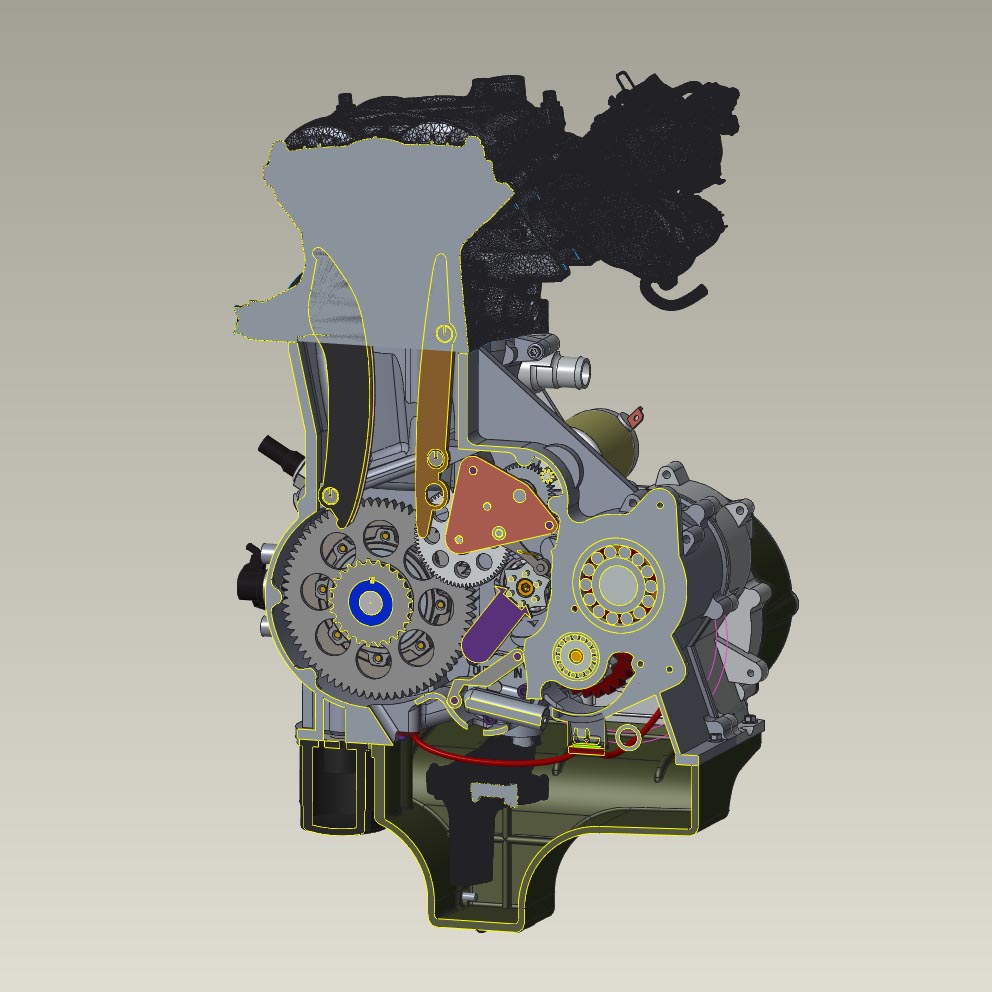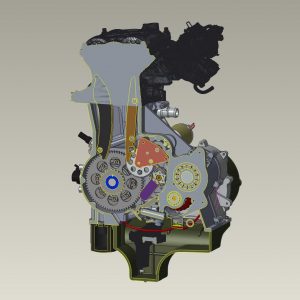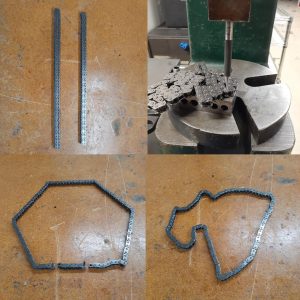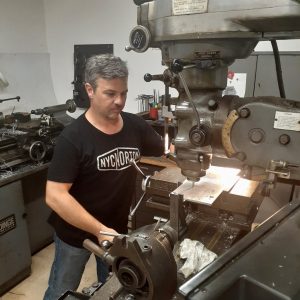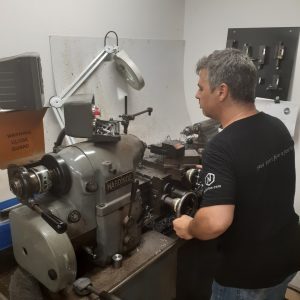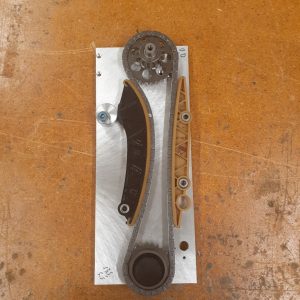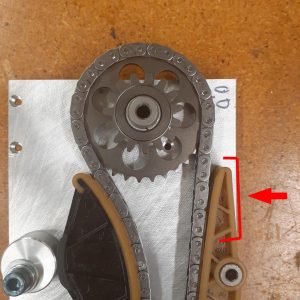Now that all the major details in engine design are finished, it is time to verify the center distances of all the shafts. Once they are individually tested, I can start generating toolpaths.
First up is the cam chain run. There is some flexibility here as the main drivers of the shape of the chain run are the fixed and pivoting cam chain guides, which are easily machined to any desired shape from nylon. I would like to reuse both OEM Panigale parts but not at the expense of a non-optimal solution.
The cylinder head has been moved away from the crank by nearly 1″ (longer connecting rod) and there is also a significant (but classified) amount of cylinder offset, so the geometry of the chain run is different than in the OEM design. This is complicated by the fact that the upper mounts for both guides are located in the cylinder head and are considered immovable. The lower mounts are both located in the new crankcases so can be positioned as desired.
To check the chain path, a mock-up of the shaft and pivot centers was made using a plate of aluminum and some spacers and shafts.
First thing that was needed was a 104 link chain due to the longer connecting rod. Since my order of custom chains from IWIS has not arrived yet, a simple spliced version would suffice for this test. A bit of grinding and pressing and presto, two short chains give their all to make one longer one.
Next, a scrap ground aluminum plate was the source for the main frame, and needed some holes in the appropriate locations, a job the Bridgeport was waiting for.
A few bushings for the shafts kept the Hardinge occupied for a few minutes. I made Delrin bushings instead of plain reamed holes in the aluminum plate so I can spin this at a decent RPM to see actual chain dynamics and not have it seize up.
After a bit of assembly, the test-setup is ready for inspection.
The pivoting guide looks like it is properly contacting the chain but the fixed guide not so much, particularly at the top near the cam sprocket.
From my discussions with the IWIS tech engineer, this area needs to have slightly more engagement with the chain. I just sent some images and questions to him but expect to have to make a new fixed guide that slightly increases the contact area in this top section of the fixed guide. The part can be machined from a bar of Nylon 6/6 so is an easy fix to the situation.
While my questions are getting answered I can move on to verifying the starter drive gear train center distances. This was a little more of a departure from the OEM design as I had to accommodate both a significantly different packaging arrangement, and a counter rotating crankshaft.
Details to follow.


